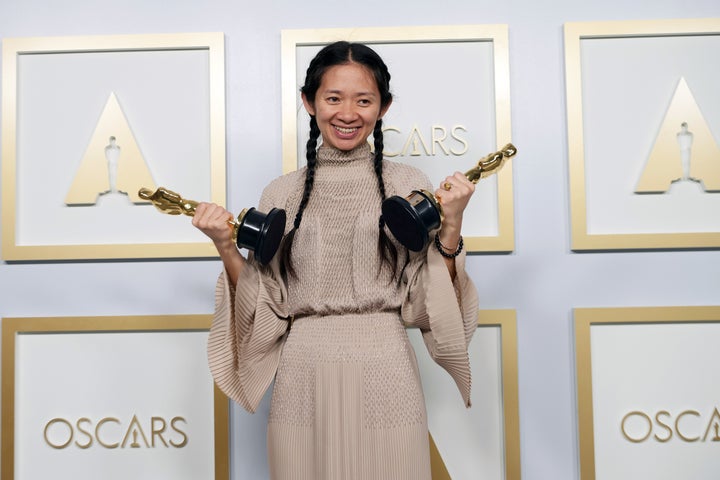
The directors of Hollywood’s top movies are finally starting to look a bit more like the U.S. population, but women of color remain starkly underrepresented, according to the latest report from the University of Southern California’s Annenberg Inclusion Initiative.
For nearly 15 years, the group, founded by USC professor Stacy L. Smith, has studied the diversity of directors behind Hollywood’s most popular films. Year after year, Smith and her team have often found minimal gains, a few blips here and there. But in their newest report released Wednesday, for the first time, there has been sustained progress in the percentages of top movies directed by women and people of color.
Each year in 2019, 2020 and 2021, the percentage of top movies directed by women has been between 10 and 15% — far exceeding the 4.5% in 2018 and just 2.7% in 2007, the first year Smith released an annual study. In 2021, 27.3% of top films were directed by people of color, an all-time high, and part of a marked increase over the last several years. But both numbers are still far below proportional representation.
Moreover, those gains largely involved white women and men of color behind the camera. The percentage of women of color directing Hollywood’s top films has remained stagnant. The study also examined the pipeline of directors going from independent movies at the Sundance Film Festival to eventually directing the year’s highest-grossing movies and award winners, finding significant inequities in career advancement for both female directors and directors of color. So, directors like Chloé Zhao — who, in 2021, became the first woman of color to win the Best Director Oscar (for “Nomadland”) and directed Marvel’s “Eternals” — are still the exception rather than the rule.
Zhao was only one of three women of color who directed top movies in 2021 (along with “Respect” director Liesl Tommy and “Candyman” director Nia DaCosta). In the nearly 1,400 movies from 2007 to 2021 included in the study, only 18 were directed by women of color. In even more stark terms, the ratio of white male directors to women of color was 69.3 to 1.

This year’s report paid particular attention to career advancement for female directors and directors of color. Smith and her team examined the demographics of directors at different levels of the industry. They found a steep decline in diversity when comparing the films competing at the Sundance Film Festival — a launchpad for independent and emerging filmmakers — to the top-grossing films included in their annual studies. It’s yet another indicator of the long-documented trend of women and people of color in Hollywood not getting the same opportunities to move up the ladder when compared to their white male counterparts.
In conjunction with the report’s release Wednesday, the Annenberg Inclusion Initiative is launching a new program designed to address that pipeline problem: the AI2 Accelerator, a grant awarded to at least one woman of color in her senior year at a U.S. film school to fund a thesis film. The winner will also have access to a team of Hollywood advisers.
The pandemic has greatly altered the business landscape of Hollywood, accelerating the rise of streaming platforms and raising questions about the status of theatrical releases and box office revenue. (It also affected the study: traditionally, Smith and her team have used the top 100 highest-grossing movies at the U.S. box office, but adjusted their methodology for 2020 and 2021.) Among the study’s other findings: Streaming platforms have generally done a better job of greenlighting movies by women and directors of color. However, the levels are still far below the U.S. population. It also may mean that more women and directors of color won’t get to see their movies in theaters.
Finally, in addition to financial success, the study also tried to examine critical acclaim. The researchers compared the Metacritic scores of the top movies over the last 14 years of the study. There was largely no difference when comparing movies directed by men vs. women and white directors vs. directors of color. Yet, movies by women of color had the highest average Metacritic scores, putting their lack of representation in even starker terms.
“The findings make it clear that the industry’s perception of a woman director continues to be that of a white woman, while ‘underrepresented’ means ‘underrepresented man,’” Smith and her team wrote in the report. “Until hiring decisions are made with intersectional inclusion in mind, the percentage of women of color working behind the camera will remain stagnant.”
Read the Annenberg Inclusion Initiative’s full report here.
